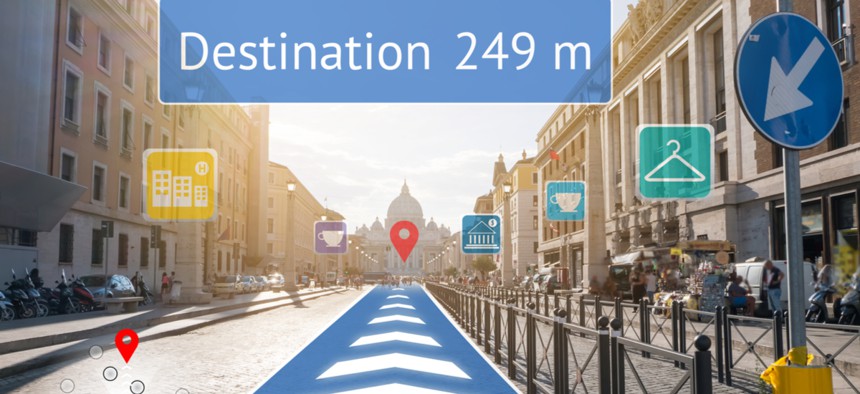8 Things Governments Can Do to Use Disruptive Technology Better

Zapp2Photo/Shutterstock.com
Making sure officials know what things like artificial intelligence do is a good starting point, according to a new report.
The payoff of disruptive technologies is greater when state and local governments integrate them to work with each other and make sure top officials know what they do, according to a Deloitte Consulting report released Tuesday.
Disruptive technologies include cloud, analytics, cybersecurity, artificial intelligence, digital reality, and blockchain.
One way governments can integrate them is by optimizing supply chains through a combination of financial system upgrades, cloud computing, AI predictive modeling, and blockchain for tracking.
“Most state and local governments … are still in the episodic stage, not necessarily working hard on a number of them,” Scott Buchholz, chief technology officer for the government and public services practice at Deloitte Consulting, told Route Fifty.
Leading agencies use AI in decision-making, deploying machine learning across core business practices like fraud detection to identify improper or wasteful spending, according to the report.
But AI does little good if an agency fails to employ talent with the skills to use the technology.
“Some of the most successful organizations are taking time to train the mission leaders in what these technologies mean and what they can do,” Buchholz said. “We sometimes call it tech fluency.”
Once leaders, who often aren’t technologists, understand what’s possible, they “can distinguish fact from fiction,” he added.
One way to develop AI skills within an agency is to hire or borrow a small group of experienced IT professionals to train others within the outfit and grow collective expertise.
A pitfall governments need to be cognizant of with AI, more so than in the private sector, is the ethics of employing the technology—an issue the CIO Strategy Council is tackling head-on in Canada, Buchholz said.
Another trend the report highlights is advanced broadband networking and fifth-generation wireless, or 5G, have governments eying new products and services like autonomous vehicles connected to smart transportation systems.
On a basic level, 5G promises gigabit-per-second connectivity with low latency for mobile devices, which could soon outpace home computers, Buchholz said.
“The last time connectivity expanded that much, we went from really crummy interfaces to apps and iPhones,” he said.
Expect a lot more devices collecting, providing and distributing data in the future, Buchholz added.
Better networking also means it will be easier to manage wide-area networks using software out of a data center. Previously, remote office setups required physical trips to install hardware, correct problems or make changes, but these things can be done remotely. That means better intranet across states, regions and municipalities, Buchholz said.
The most intelligent system interfaces rely on computer vision, conversational voice, auditory analytics, and augmented and virtual reality together for easy use, according to the report. For example, law enforcement agencies are beginning to look into facial recognition software for identifying suspects as it becomes simpler.
Chief information officers are increasingly concerned with personalizing experiences on products like apps to increase public engagement, according to the report.
“In the best cases, we’re seeing CIOs start to become key members of the leadership team,” Buchholz said. “Every government today is a technology organization, and the degree to which they realize that will help them along their journeys.”
The concept of agile development came about with the goal of bringing business and government together in a way that fulfilled mutual expectations. Once siloed, development and operations became DevOps to boost efficiency and speed up releases from daily or weekly to multiple times a day, Buchholz said.
But cybersecurity teams hadn’t kept up, he added, making bringing them into the fold the logical next step.
DevSecOps strives to embed cybersecurity and privacy controls into information technology delivery models from the outset, according to the report. That way cyber and risk management go from being compliance-based activities to an engineering task, Buchholz said.
Perhaps most importantly, a government’s digital transformation should not be guided by a single disruptive technology but instead a repeatable framework, Buchholz said.
“There’s some competition between governments; a certain amount of copying occurs,” Buchholz said. “The organizations that get started working across multiple trends and experimenting with AI in ethical, sensible applications … will see their populations respond accordingly and positively.”
NEXT STORY: DARPA Wants AI to Tell You When It's Dumb






